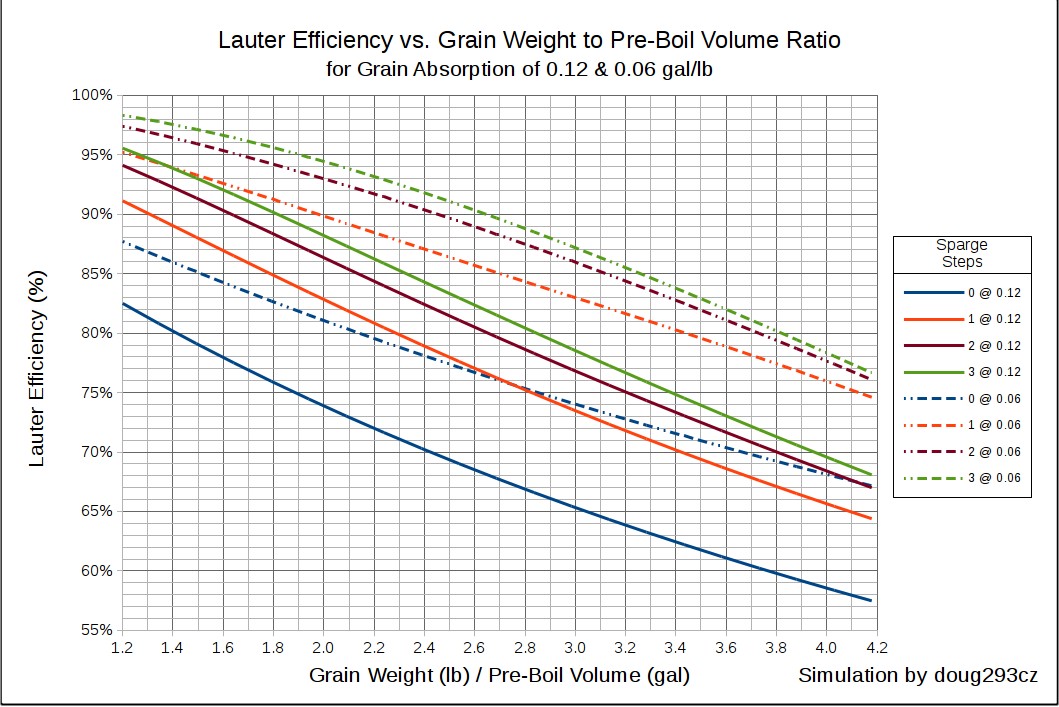Hi All.
I've been brewing 5 gallon full volume BIAB batches in an 11 gallon kettle for the last year and have been very happy with my efficiency (usually around 80%) and the quality of my beers. Now, with warmer weather on the way I've decided to up my batch size to 7.5 gallons so that I can fill a 5 gallon keg for my keezer as well as a 2.5 gallon keg for outdoor fun.
I've determined that if I hold back 1.5 gallons or so from the mash then I'll have enough headroom in the kettle. I figured that after the usual draining and squeezing of the bag I would dunk it like a teabag in the remaining water and add that to the kettle as it's coming to a boil.
Has anyone had any experience using both methods? I'm wondering how this will affect efficiency, so that I can calculate my mashbill as accurately as possible. I'm also wondering whether there is anything else to consider that I may have missed.
Any help would be appreciated.
Thanks!
Dan
I've been brewing 5 gallon full volume BIAB batches in an 11 gallon kettle for the last year and have been very happy with my efficiency (usually around 80%) and the quality of my beers. Now, with warmer weather on the way I've decided to up my batch size to 7.5 gallons so that I can fill a 5 gallon keg for my keezer as well as a 2.5 gallon keg for outdoor fun.
I've determined that if I hold back 1.5 gallons or so from the mash then I'll have enough headroom in the kettle. I figured that after the usual draining and squeezing of the bag I would dunk it like a teabag in the remaining water and add that to the kettle as it's coming to a boil.
Has anyone had any experience using both methods? I'm wondering how this will affect efficiency, so that I can calculate my mashbill as accurately as possible. I'm also wondering whether there is anything else to consider that I may have missed.
Any help would be appreciated.
Thanks!
Dan
































![Craft A Brew - Safale S-04 Dry Yeast - Fermentis - English Ale Dry Yeast - For English and American Ales and Hard Apple Ciders - Ingredients for Home Brewing - Beer Making Supplies - [1 Pack]](https://m.media-amazon.com/images/I/41fVGNh6JfL._SL500_.jpg)


























